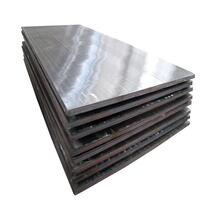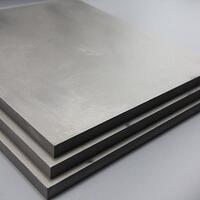1. Introduction
Metal clad is a term that spans multiple industries—from architecture and construction to electrical engineering and metallurgy. At its core, the metal clad meaning refers to materials composed of two or more bonded metal layers, each contributing unique properties such as corrosion resistance, strength, conductivity, or aesthetic appeal. Whether you’re considering a metal clad house with corten steel siding or specifying metal clad electrical wire for an industrial project, understanding the scope and versatility of clad metals is essential.

2. What Is Clad Metal Meaning?
Clad metal meaning describes a composite material where a base metal is bonded—through rolling, explosion bonding, or other methods—with one or more outer layers of a different metal. This process creates clad metals that combine cost-efficiency with enhanced performance. Common examples include aluminum clad stainless steel, stainless clad aluminum, and copper nickel clad. These combinations are widely used in aerospace, chemical processing, marine environments, and building exteriors.
- Aluminum clad steel offers lightweight strength with improved corrosion resistance.
- Titanium clad components provide high durability in extreme conditions.
- Copper-clad wire (cu clad wire) enhances electrical conductivity while reducing material costs.
3. Metal Clad in Construction and Architecture

In modern architecture, metal cladding serves both functional and aesthetic purposes. A metal clad wall or metal facade not only protects the underlying structure but also defines a building’s visual identity. Popular choices include corrugated steel facade panels, zinc metal siding, and corten steel facade systems known for their weathering properties and distinctive rust-like appearance.
Homeowners and builders often opt for a metal clad house due to its longevity, low maintenance, and contemporary look. Options like exterior corrugated metal siding, vertical standing seam metal siding, and colorbond standing seam roofing offer versatility in design. Additionally, features such as a zinc clad dormer or pac clad column covers add architectural detail while maintaining material consistency.
4. Roofing and Siding Solutions
Metal clad roof systems are increasingly favored for their durability and energy efficiency. Systems like pac clad standing seam roof and zinc clad roof provide excellent water runoff and thermal performance. Standing seam siding—whether in steel, aluminum, or coated alloys—delivers clean lines and weathertight integrity.

For sheds and auxiliary structures, a metal clad shed constructed with steel plate or aluminum diamond tread plate offers rugged protection. Meanwhile, metal weatherboard and stainless steel metal plate elements can be integrated for both utility and style. Corten siding cost remains competitive given its minimal upkeep and long service life, making corten steel siding cost-effective over time.
5. Industrial and Engineering Applications
Beyond buildings, clad metals are critical in industrial contexts. Aluminum clad pipe insulation protects pipelines in refineries, while metal clad insulation is used in high-temperature environments. In electrical systems, metal clad electrical wire and aluminum clad steel wire ensure safety and reliability, especially in commercial settings where codes may require armored cable like metal clad type MC.
Specialized products such as pac clad coping, pac clad hwp (horizontal wall panel), and aluminum clad sheet are engineered for specific performance criteria. Alloy clad variants—including 2024 T3 clad, 7075 T6 clad, and inconel weld overlay—are selected for aerospace or high-stress mechanical applications where strength-to-weight ratios and heat resistance are paramount.
6. Material Variants and Plate Products
The market offers an extensive range of metal plate and sheet options that support cladding and structural needs. From mild steel plate and carbon steel plate to high-grade stainless steel plate (including 316, 304L, and 904L variants), these materials serve as substrates or finished surfaces. Specialty plates like diamond plate steel, aluminum checker plate, and chrome carbide overlay plates address slip resistance, abrasion, or wear challenges.
Commonly sourced items include 1/8 inch steel plate, 3/16 metal plate, and 6061 T6 aluminum plate—all available from stainless steel plate distributors. Processes like electroplating, chromium electroplating, and electroless nickel coating further enhance surface properties. Whether you need brass plates for engraving, titanium plate for medical devices, or perforated plate for filtration, the diversity of clad and solid metal products meets nearly every engineering demand.
7. Conclusion
Metal clad technologies bridge aesthetics, functionality, and performance across countless sectors. From a sleek steel facade on a downtown office to the reliable conduction of aluminum clad wire in a factory, clad metals solve real-world challenges through intelligent material layering. As innovation continues in alloy development and bonding techniques, the applications for metal clad solutions—from pac clad systems to titanium clad components—will only expand, reinforcing their role in sustainable, resilient design and manufacturing.
Our Website founded on October 17, 2012, is a high-tech enterprise committed to the research and development, production, processing, sales and technical services of ceramic relative materials such as Understand. Our products includes but not limited to Boron Carbide Ceramic Products, Boron Nitride Ceramic Products, Silicon Carbide Ceramic Products, Silicon Nitride Ceramic Products, Zirconium Dioxide Ceramic Products, etc. If you are interested, please feel free to contact us.
